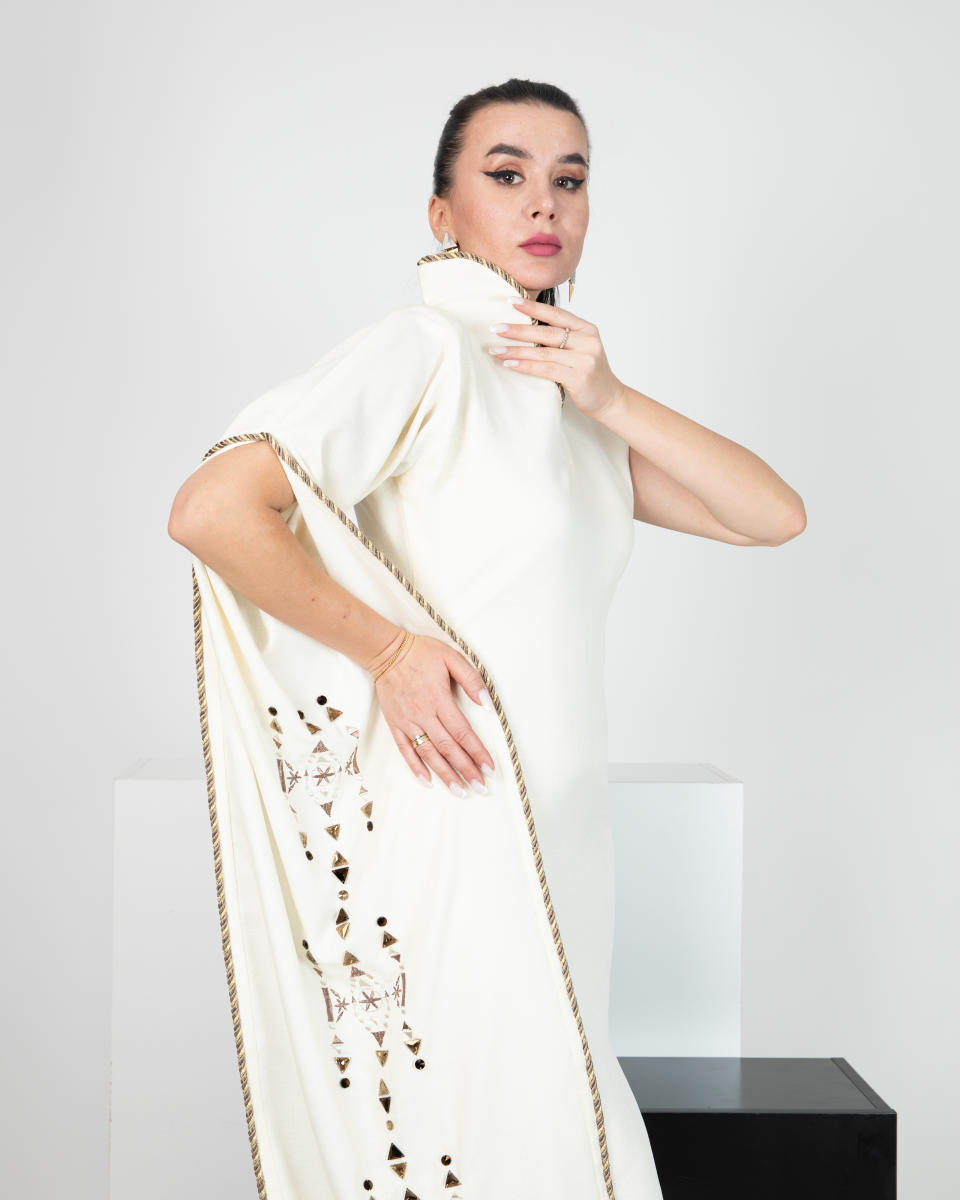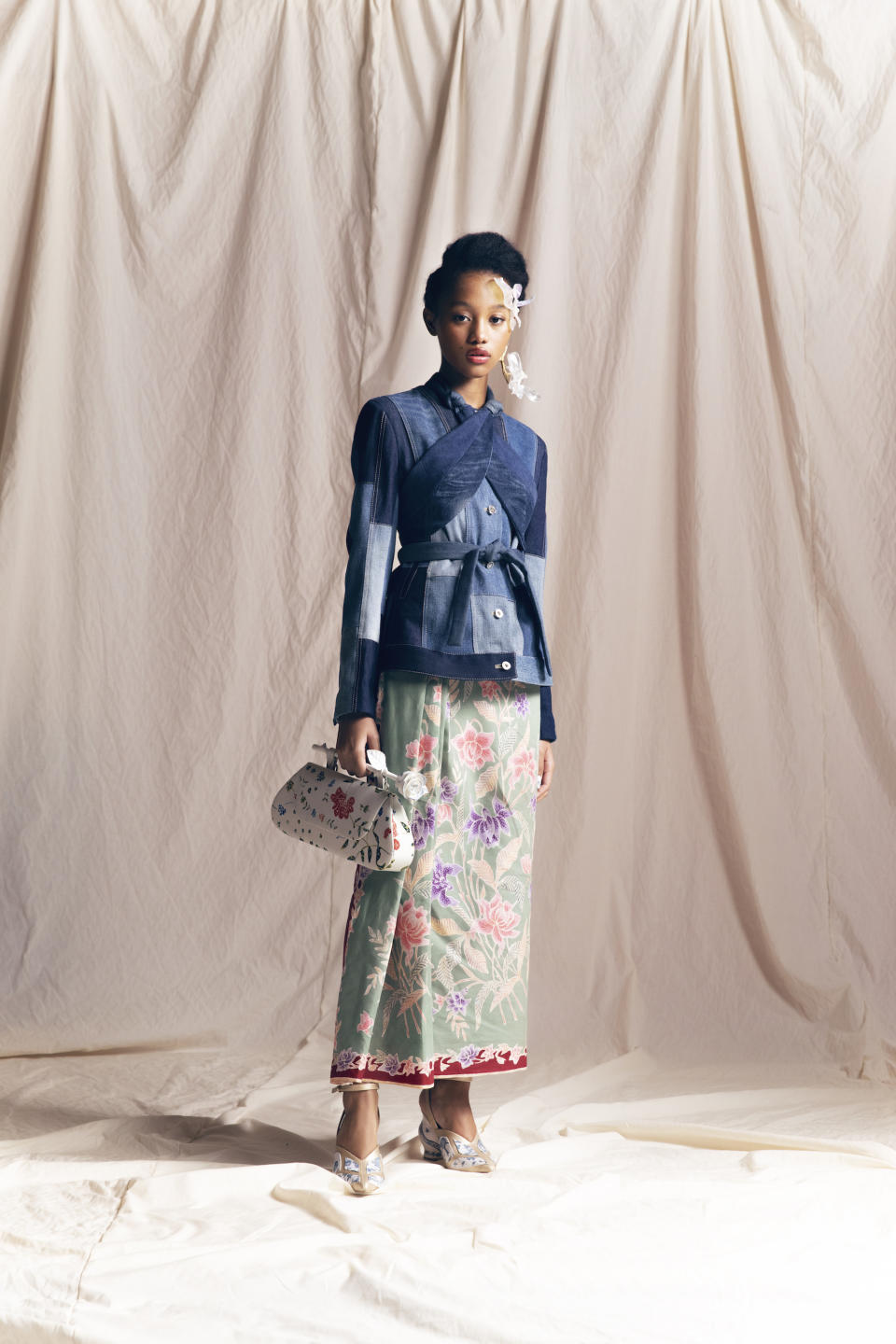White Milano Increasingly a Platform for International Brands

MILAN — Cross-pollination was the key word of the latest White Milano edition, which featured a significant presence of designers from Saudi Arabia, Qatar, Armenia and Spain, flanking new talents from Italy, the U.K., Holland and Indonesia, with more than 360 exhibitors divided into different areas.
The event from Sept. 22 to 25 closed with 16,314 visitors, with a 5 percent increase in buyers from outside Italy. This led founder and art director Massimiliano Bizzi to enthuse about White Village, offering daily activities and meetings from 6 to 10 p.m. CET. “For the first time, we presented a clear project and not just a networking aperitivo,” Bizzi said. “We started on Friday with a talk at Mudec — Museo delle Culture, dedicated to AI, which had a strong response, in collaboration with the renowned Albini Group and its CEO, Fabio Tamburini.”
More from WWD
Bizzi contended that “textiles are never enhanced in Milan during fashion week, while we believe they have much to say today regarding innovation and sustainability, as in the case of Albini’s biodegradable cotton. The intent is to inform in a fun way, a bit like what happened in the early days of the Salone del Mobile.”
This edition saw a surge of brands based in areas usually beyond the fashion radar yet offering creative quality products. White Milano strengthened its partnership with the Saudi Fashion Commission, which in the 10,800 square feet of the Visconti Pavilion brought together a selection of emerging and established brands joining the Saudi 100 Brand project. They included Agmarat, Derza, Mona AlShebil, Rebirth, The Naqadis and the emerging 35 Design, JF, Khharaz by Shamma, Noura Alghilaisi, Reham Nassier and Samar Nasraldin.

A fashion show of Saudi brands was staged at Palazzo Serbelloni on the evening of Sept. 20 to shine a light on the work of the designers, of whom 85 percent are women, and a temporary shop was opened inside the 10 Corso Como concept store.
Brands designed and made in Qatar were presented at White Milano, too. Aligned with its goal to support start-ups and small and medium-sized companies, the fair collaborated with Scale 7, the first fashion and design business incubator founded by the Qatar Development Bank (QDB) in partnership with M7. In a specific area within SuperstudioPiù, Dana Riad, Drizzle, Fursan, Harlienz, Hissa Haddad, Irreplaceable, JWHAR, LIN, Marpholio and Maryam Al Darwish showcased their collections, which also included modest fashion of abayas and caftans, as well as footwear, bags and accessories.
“The idea of exploring the Middle East came from our exhibitors looking for different markets,” explained Simona Severini, head of White Milano fashion research, promotion and development. “That area has enormous potential in commercial development, but when we approached it, we understood that the exchange could not be one-way only.”
Severini said the scope should be extended beyond Dubai to Jeddah, Riyadh and Doha, where international department stores such as Harvey Nichols and Galeries Lafayette have opened.
“Local customers don’t just want to wear a Dior bag or Prada shoes they can buy while traveling. They want to discover new brands and be discovered in a positive cross-pollination,” Severini opined. “Fashion, like art, can be an excellent tool for overcoming mistrust and misunderstandings.”
While Arabic products convey an idea of sophisticated glamour, the selection of Armenian designers present at White Milano reflected a more conceptual style. Loom Weaving, The Muse, Dajeli and Nicolian Zakarian Jeans were among the 10 designers who joined the fair as part of the Fashion and Design Chamber of Armenia project. They combined strong expertise in premium denim — even in recycling — with a range of knitwear and embellishments, such as jewelry and embroideries.
The contribution of Spanish brands was also significant. The fashion sector has regained relevance in the Spanish economy in recent years, now accounting for 2.7 percent of the country’s GDP, according to the Economic Report on Fashion in Spain 2022 released by Modaes and quoted by ICEX España Exportación, the government institution supporting Spanish companies in their international development.
Scouting of new talents is another White Milano pillar. This season, among the up-and-coming names gathered in the Secret Rooms, there was buzz about Italian designer Alberto Ciaschini, with his collection of footwear with a cigarette-shaped heel; Italian Japanese designer Risa Nakamura, reworking the typical Japanese aesthetic in a fresh and more colorful way, and Indonesian brand Toton, where foreign influences were both acknowledged and examined, to be mixed with traditions and inspirations from his own culture.

Best of WWD

